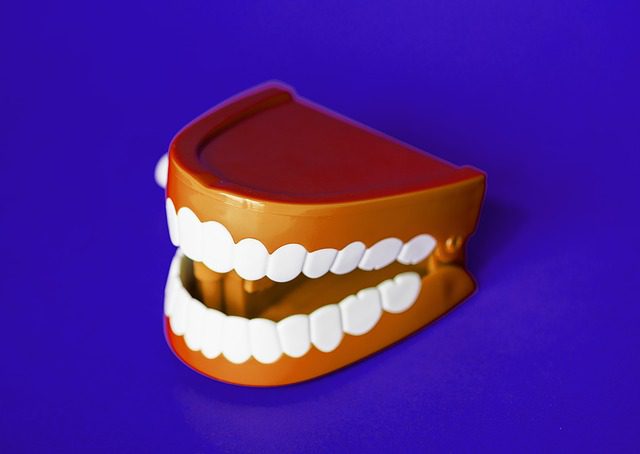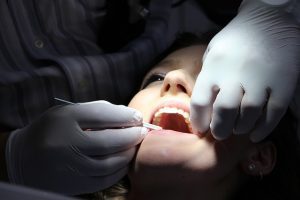A gummy smile is when there is a noticeably high amount of gum tissue around your teeth. It’s the complete opposite of a toothy smile, which is usually the result of receding gums due to gum disease, like periodontal disease or gingivitis. There is too much gum tissue, which isn’t considered aesthetic, and can cause someone to feel self-conscious about their smile.
It’s a common condition, and there are a number of oral surgeries, as well as non-surgical options, that can be done to correct it. The procedure may be considered cosmetic dentistry, unless fixing your gummy smile also fixes an underlying issue with your jaw.
What Causes a Gummy Smile?
A gummy smile might be caused by a number of factors:
- You may suffer from an abnormal tooth eruption — where your teeth are a proper length but haven’t emerged fully below the gum line for some reason.
- You may also have a hyperactive upper lip muscle. This is when an especially strong upper lip muscle pulls your lip up higher, exposing a high amount of gum tissue when you smile.
- You may have a problem with your upper jawbone development. Sometimes a protruding upper jaw can make the jaws appear bigger whenever you smile. This bone can also simply grow too long.
- A gummy smile can also be caused by gum encroachment, which is typically a result of neglecting your oral care. Besides removing debris and bacteria, brushing your teeth also stimulates your gums. If you don’t brush regularly, your gums might start to encroach on the crowns of your teeth, making your smile gummy and your teeth appear short.
- Gingival hyperplasia, which is an overgrowth of the gums, is a condition that can be genetic or caused by medications. Gingival hyperplasia requires long-term care by an oral surgeon who can do repeated gingivectomies to keep the gum line where it should be.
Oral Surgeries to Help a Gummy Smile
We have a number of oral surgery approaches, depending on the cause and nature of your gummy smile:
- Gingivectomy: This is a simple kind of oral surgical procedure
- Lip Repositioning Surgery: This is a minor oral surgery that takes less than an hour and heals in about a week. We’ll numb the lips and gums with a local anesthetic, and then gently separate your hyperactive lip muscle. Then we’ll reattach your upper lip closer to your gum line.
- Orthognathic Surgery: Your oral surgeon will recommend this course of gum correction if your gummy smile is caused by an overgrowth of the upper jaw bone. It’s a more invasive oral surgery that requires a hospital stay and 2-3 months of healing time. The maxillofacial surgeon removes bone in your upper jaw to balance it to the correct proportions, then anchors it with little screws and plates. You shouldn’t need your jaw wired shut, but you may have to wear elastic for the first few weeks of healing so the jaw bone stays in place.
- Crown Lengthening: In this simple procedure, we numb the lips and gums with a local anesthetic, and surgically reshape the bone and gum tissue around a single tooth or across the entire gum line. This brings out the tooth surface to expose more of the tooth and less of the gums. This type of oral surgery for a gummy smile is used in cosmetic dentistry cases and doesn’t affect any underlying structures.
- Temporary Anchorage Devices: This procedure is kind of an oral surgery, but it’s way less invasive than other options. An oral surgeon places tiny screws into your jaw bone to pull your teeth into a better position. This is a good option for when gummy smiles are caused by misaligned bites or other teeth-related issues.
Non-Surgical Interventions Oral Surgeons Use to Fix a Gummy Smile
If wanting to fix your gummy smile is about looks and not pathology, there are several non-surgical options a cosmetic dentist or oral surgeon might suggest. It’s important to note that many of these options require upkeep.
- Botox: Your cosmetic dentist can inject Botox into the upper lip to freeze the muscles and prevent contraction of the upper lip when you smile. This is a way of trying out gum contouring to see if you like the new look. The effects are temporary, but if you like the look of your smile, we can try other, more permanent approaches.
- Fillers: We can also inject gel substances like hyaluronic acid or Juvederm into the upper lip to make it fuller. This way, your gums will be less noticeable. Fillers last about a year, and can be dissolved at any point if you don’t like the look after injection. This approach is a little more expensive than Botox.
- Laser Contouring: This is a newer procedure that does what crown lengthenings and gingivectomies do, but without having to have an oral surgical procedure The oral surgeon or cosmetic dentist uses a laser to contour the gum line so it’s in better proportion to your teeth and lips when smiling.
Whatever you choose, just know that there are several options to fix any kind of gummy smile, and it’s not at all an uncommon problem. A good oral surgeon will be able to tell you which options are best for you as well as which your insurance is most likely to cover.










